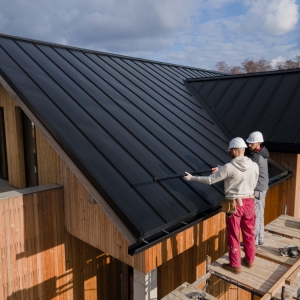A study table is more than just a piece of furniture. It is where students prepare for exams, professionals complete important projects, and readers immerse themselves in knowledge. Because of its central role in our daily routine, the choice of material becomes extremely important. The durability, style, and longevity of a study table depend greatly on the materials used in its construction. Whether you are buying one for a child, a university student, or for your home office, knowing the strengths and weaknesses of different materials ensures that your investment lasts for years.
When selecting the right table, many people focus only on design or cost. While those factors matter, the real value lies in choosing a material that can withstand daily use and remain reliable over time. Below, we will explore some of the best materials that make study tables both durable and long-lasting, helping you make the right choice for your needs.
Solid Wood: The Timeless Choice
Solid wood has always been a top choice for furniture, and for good reason. It offers incredible strength, natural beauty, and the ability to last for decades if cared for properly. Woods such as oak, teak, maple, and sheesham are particularly popular in crafting sturdy study tables. Their dense composition prevents easy wear and tear, making them ideal for environments where a table is used daily.
Another advantage of solid wood is its classic appearance. A wooden table blends well with almost any room décor, from traditional to modern interiors. It can also be polished or stained in different shades, offering a level of personalization that other materials may lack. While solid wood tables may come with a higher upfront cost, they often pay for themselves in the long run, thanks to their durability and the ability to restore them even after years of use.
Engineered Wood: A Budget-Friendly Alternative
For those who admire the look of wood but seek a more affordable option, engineered wood is a reliable choice. Materials such as plywood, MDF (medium-density fibreboard), and particle board are commonly used in modern study tables. These materials are created by binding wood particles or fibres with adhesives under high pressure, resulting in a product that is lighter yet still reasonably strong.
Engineered wood is popular because it is cost-effective while still offering a polished and appealing finish. It is also available in a variety of designs and colours, allowing homeowners to match their study table with other furniture in the room. However, the durability of engineered wood depends on its quality. Higher-grade engineered boards are resistant to moisture and last longer, while cheaper varieties may show signs of swelling or weakening over time. If you are considering study table price in Pakistan, engineered wood often provides a good balance between affordability and practicality.
Metal: Strength and Modern Appeal
Metal study tables are a great option for people who value durability above all else. Tables made from stainless steel, iron, or aluminium are known for their strength and resistance to damage. They can endure heavy loads, making them particularly useful for individuals who use multiple books, laptops, or equipment while studying or working.
Another appealing feature of metal tables is their modern and industrial look. They often have sleek, minimalist designs that suit contemporary homes and offices. Furthermore, metal is resistant to pests like termites and does not warp under humidity, unlike some types of wood. However, to prevent rust and maintain the shine, proper finishing and regular cleaning are essential. With the right care, a metal study table can last for decades without losing its functionality or appeal.
Glass: Elegant but Fragile
Glass tables add an element of elegance to any room. They create a clean, airy look and can make smaller spaces appear larger due to their reflective surface. Tempered glass, in particular, is stronger than ordinary glass and is commonly used in furniture for safety reasons. When combined with metal or wooden frames, glass-top tables can look stylish while still providing durability.
Despite its beauty, glass requires extra care. It can scratch easily and, although tempered glass is strong, it is still susceptible to shattering under extreme pressure. Families with children may find glass study tables less practical, as they require careful handling. Nonetheless, for adults seeking a modern and sophisticated workspace, glass can be a rewarding choice if maintained properly.
Plastic: Affordable and Lightweight
Plastic may not be the first material that comes to mind when thinking about durability, but it does have certain advantages. It is lightweight, affordable, and resistant to stains and moisture. For children’s study tables, plastic is often a convenient option because it is easy to clean and can withstand rough use without significant damage.
However, plastic is less durable than wood or metal in the long term. Over time, it may fade, crack, or lose its sturdiness, especially if exposed to sunlight for extended periods. While plastic tables are excellent for temporary or light use, they may not be the best option for someone looking for a long-lasting investment. Still, their affordability makes them a practical short-term solution.
Marble and Stone: Luxury and Endurance
For those who want to combine luxury with durability, marble and stone tables are worth considering. These materials are incredibly strong and resistant to scratches, heat, and heavy loads. A marble-top study table can last a lifetime, and its unique natural patterns add a touch of sophistication to any space.
The main drawback of marble and stone tables is their weight. They are heavy and difficult to move, which may not be ideal for people who frequently rearrange their furniture. Additionally, they tend to be more expensive compared to other materials. However, if you prioritize longevity and elegance, marble and stone stand among the most durable choices available.
Choosing the Right Material for Your Needs
When deciding on a study table, it is essential to consider who will use it, how often, and in what kind of environment. For children, lightweight and affordable options like plastic or engineered wood might be ideal. For professionals or university students who need a sturdy workspace, solid wood, metal, or high-quality engineered wood are better investments. Meanwhile, those who value aesthetics may lean toward glass or marble, even if they require more care.
Your budget also plays an important role. Solid wood and marble may be costly upfront, but they promise decades of use. Engineered wood and plastic are budget-friendly but may need replacement sooner. Metal falls somewhere in between, offering strength at a relatively reasonable cost. By balancing your budget with your durability needs, you can select the perfect material for your study table.
Final Thoughts
The material of a study table is not just about appearance; it directly affects how long the furniture will last and how well it will serve its purpose. Solid wood offers timeless strength, engineered wood provides affordability, metal ensures resilience, glass adds elegance, plastic offers practicality, and marble exudes luxury. Each material has its own advantages and drawbacks, and the right choice ultimately depends on your lifestyle, budget, and expectations.
By investing in the right material, you can ensure that your study table remains a reliable companion for years of learning, working, and creating. After all, a durable and long-lasting study table is more than just furniture—it is an essential part of a productive and inspiring environment.






